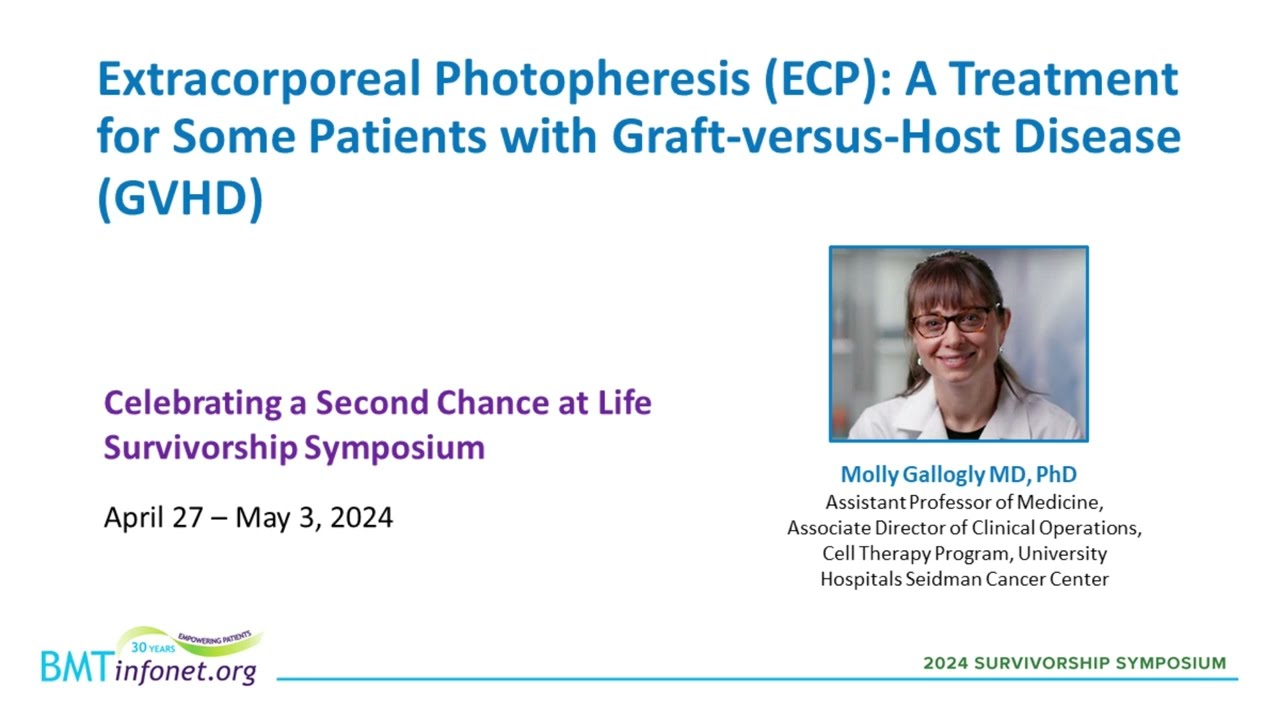Acute Graft-versus-Host Disease Symptoms and Treatment
Acute GVHD typically occurs during the first three months after transplant, although it can also occur later.
Factors that increase the risk of developing acute GVHD include:
- total body irradiation as part of the conditioning regimen before transplant
- advanced patient and donor age
Preventing Acute GVHD
To reduce the risk of developing acute GVHD, patients are usually given medications starting a day or two before transplant or shortly thereafter, such as:
- cyclosporine
- tacrolimus
- methotrexate
- mycophenolate mofetil
- sirolimus
- antithymocyte globulin
- abatacept
These drugs suppress the donor's immune system, making it more difficult for the donor's cells to attack your organs and tissues. You may need to continue taking these drugs for several months after transplant.
Recently, doctors have found that giving patients a chemotherapy drug called cyclophosphamide (Cytoxan®) a few days after transplant significantly reduces the incidence of both acute and chronic GVHD. This strategy is becoming standard care at most transplant centers.
T-cells are a type of white blood cell. They are part of the immune system and develop from stem cells in the bone marrow. T-cells help protect the body from infection and may help fight cancer but they can also cause GVHD.
At some transplant centers, the T-cells that cause GVHD are removed from the donor's cells prior to transplant. This procedure is called T-cell depletion. Although T-cell depletion reduces the risk of developing GVHD, it can increase the risk of relapse or infection in some patients. Researchers are exploring whether removing a subset of T-cells from the donor's cells will protect patients against GVHD without increasing the risk of relapse or infection.
Symptoms of Acute GVHD
In most patients, acute GVHD first affects the skin, causing a mild, faint rash on the:
- back, shoulders, ears, or neck
- palms of the hands or soles of the feet
The rash may resemble a sunburn with peeling or blistering, or may look like a heat rash and may eventually spread.
Acute GVHD can also affect the gastrointestinal tract, causing:
- abdominal pain
- watery or bloody diarrhea
- persistent nausea and/or vomiting
- loss of appetite or feeling full after eating only a little
If acute GVHD affects the liver, it can cause:
- elevated liver enzyme levels
- jaundice (yellowing of skin and eyes)
- dark urine
Tell your doctor immediately if you develop any symptoms of GVHD. Although these symptoms may be caused by other health problems, early detection and treatment of acute GVHD is important to prevent additional, serious complications.
Treatment for Acute GVHD
If you develop acute GVHD, drugs such as prednisone or methylprednisolone may help control the disease. If your GVHD does not respond to these drugs, your doctor may try other treatments such as:
- ruxolitinib
- antithymocyte globulin
- sirolimus
- mycophenolate mofetil
- extracorporeal photopheresis
Extracorporeal photopheresis (ECP) is a procedure that removes some white blood cells from the patient, mixes them with a drug called psoralen, and exposes them to ultraviolet light. The cells are then re-infused into the patient.
Your doctor may also recommend that you enroll in a clinical trial that is testing a new therapy for acute GVHD.
Your doctor will begin tapering down the dosage of the drugs once it appears your acute GVHD is under control. It’s possible, however, for acute GVHD to return or get worse during the tapering process. You may need to continue the medications for a longer period of time until the disease is no longer active.
Take Action!
Tell your transplant doctor immediately if you develop a skin rash or other symptoms of acute GVHD. Although these symptoms may be caused by other health problems, early detection and treatment of acute GVHD is important to prevent additional, serious complications.



